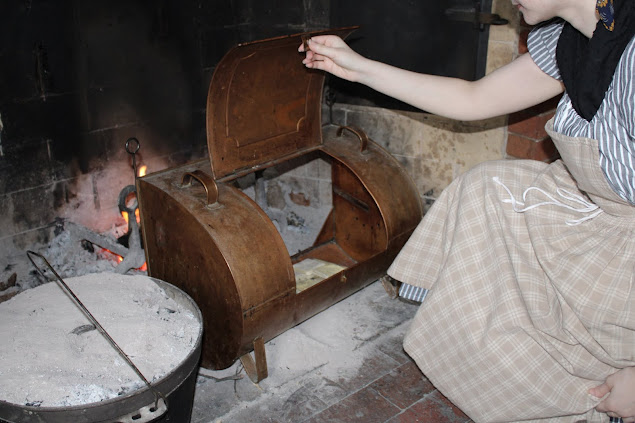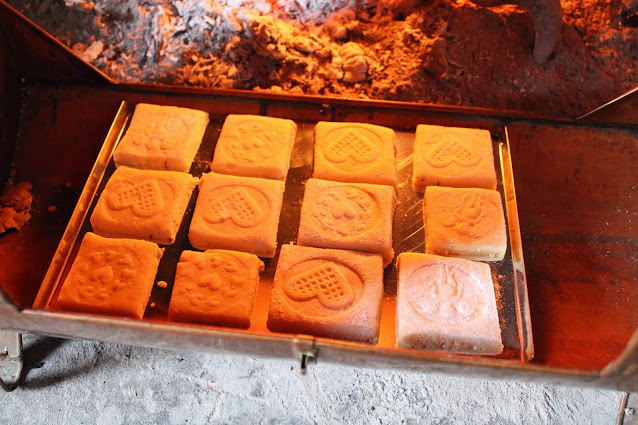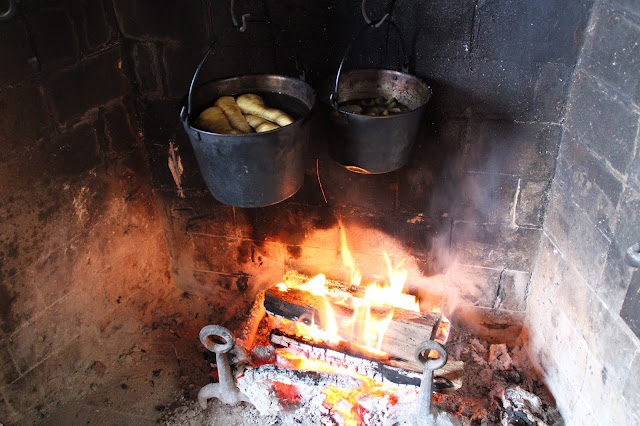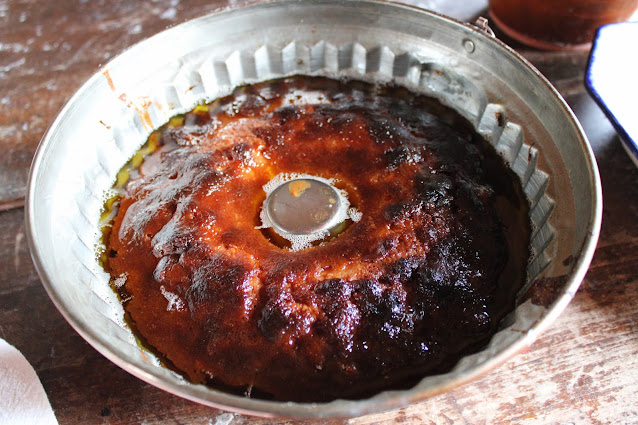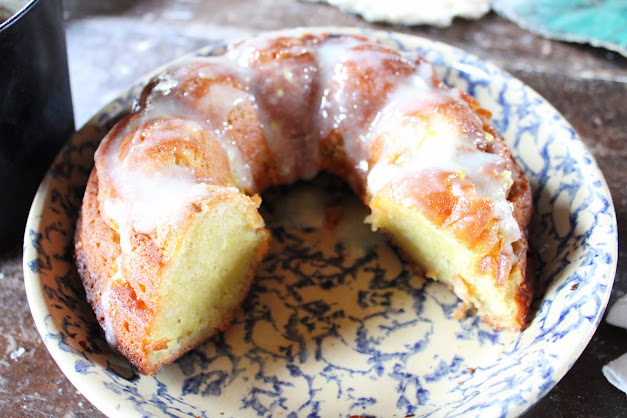Today's dessert comes from a 1796 recipe for pound cake with lemon icing from the same book.
American Cookery by Amelia Simmons is a relatively easy book to follow and consists of recipes varying from roast meats to puddings and preserves. Her directions for pound cake go as follows:
Pound Cake.
"One pound sugar, one pound butter, one pound flour, one pound or ten eggs, rose water one gill, spices to your taste; watch it well, it will bake in a slow oven in 15 minutes."
This is a very rich cake which requires one pound of butter and ten eggs. If you have a good dairy cow you will put her to great use for this cake. It may taste unlike any pound cake that you have previously tried due to its exquisite richness and thickness. Due to the large amount of eggs this cake also takes on an almost custard-like flavor.
The icing (which is originally called "lemon cream" in American Cookery) has an agreeable lemonade flavor. This cream can be thickened by placing it in a cool cellar or ice box however I skipped this in order to render the icing less thick. If desired you may eat the icing alone in china dishes. The directions for this lemon icing/cream are as follow:
Lemon Cream.
"Take the juice of four large lemons, half a pint of water, a pound of double refined sugar beaten fine, the whites of seven eggs and the yolk of one beaten very well; mix altogether, strain it, set it on a gentle fire, stirring it all the while and skim it clean, put into it the peal of one lemon, when it is very hot, but not to boil; take out the lemon peal and pour it into china dishes."
Let us begin, shall we?
Pour a little over 3 cups of all purpose flour into your desired mixing bowl.
Add two cups of white or raw sugar and mix
Once mixed add in 10 whole eggs and combine
Pour in one gill (half a cup) of rose water. Rose water can easily be sourced from grocers providing international foods, especially foods from the Middle East
Finally, we need to include one pound of butter. For the sake of ease I melted the butter over my hearth. I strongly recommend melting your butter before adding it to the batter. Over a healthy fire this should take no more than 15 minutes.
Once your butter is a liquid add it to the batter and mix well. This is a rather runny batter.
Pour this batter into the mold of your choice then tap the mold 3x to disrupt any air bubbles. You are now ready to bake your pound cake. According to the recipe this cake should be complete in 15 minutes in even the slowest of ovens however in my experience it took much longer. In a dutch oven it took me around an hour. Your baking times will vary depending on how hot your fire is and the abundance of hot coals. Stick a fork in the cake once you suspect it to be done. If it comes out clean it is done.
Because this cake is so rich when you first remove it from your oven you'll find that there is still a layer of butter bubbling on the surface. Do not be alarmed. Once the cake meets cool air this fluid shall quickly absorb.
Only five minutes has passed and the excess butter has been absorbed. Again, this is a very rich cake.
Now that that is cooling let us focus on our lemon icing
Take the juice from 4 lemons. Remove all seeds then add in half a cup of water, 2 cups of white sugar, and the whites of 7 eggs with 1 yolk.
Once you have added all of your ingredients your icing should look similar to this. If you desire a more intense lemon flavor grate in the rind of one lemon. It certainly does not look like icing yet! This is why we need heat. Put your mixture into a small pan and cook on medium heat for 10 minutes. Be sure that this mixture does not boil.
In the meantime, flip your cake from its tin.
After your icing has been over the fire for 10 minutes remove and let sit for a further 10 minutes. If you chose to add the rind of lemon you must remove it before serving, lest your icing be bitter. Now you may spread it on your cake with a spoon. Enjoy!
If you are unable to view the above YT video click this link:
Ingredients
Pound cake:
all-purpose flour: a little over 3 cups
white or raw sugar: 2 cups
eggs: 10 eggs
butter: one pound (usually equals to 4 sticks)
rose water: half of one cup
Firstly combine your dry ingredients of flour and sugar. Next, mix in 10 whole eggs, half a cup of rose water and finally one pound of melted butter. Bake in a 320 degree oven for one hour give or take 10 minutes.
Lemon icing:
Lemons: 4 large
White sugar: 2 cups
Water: half a cup
eggs: 8 eggs
Juice four large lemons and remove the seeds from this juice. Stir in 2 cups of white sugar, a splash of water followed by the whites of seven eggs and the yolk of one. If you wish to have a more intense lemon flavor grate the skin of one lemon. Once combined, pour into a small pan and cook over medium heat for 10 minutes. Be sure that this mixture does not boil. Instead we want it to steam. Once the 10 minutes have passed remove from your heat and let sit for a further 10 minutes before pouring onto your cake. If you chose to add the skin of one lemon be sure to remove this before serving as it will be bitter. If you desire for this frosting to be thicker you may set it in a cold place for half an hour.












